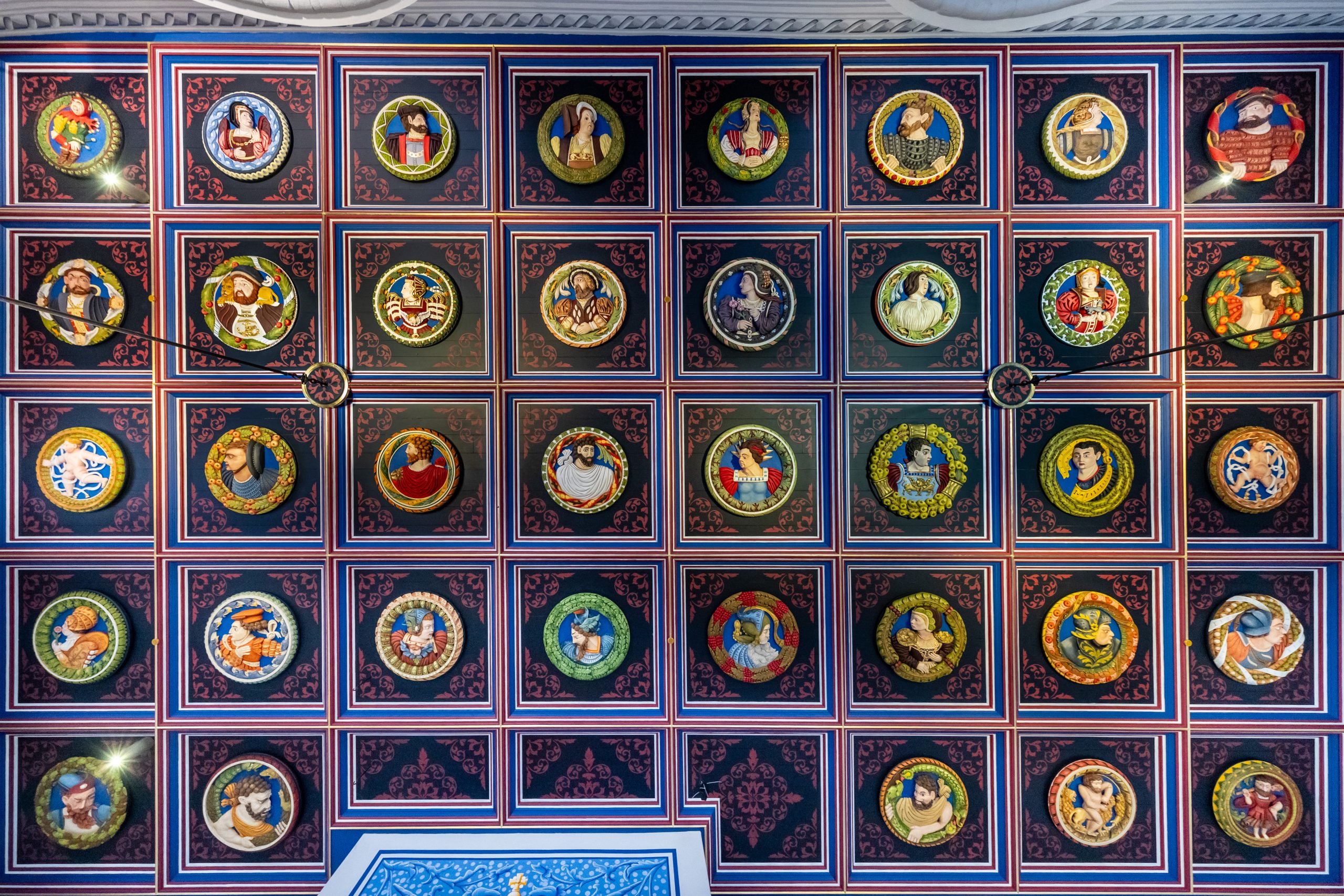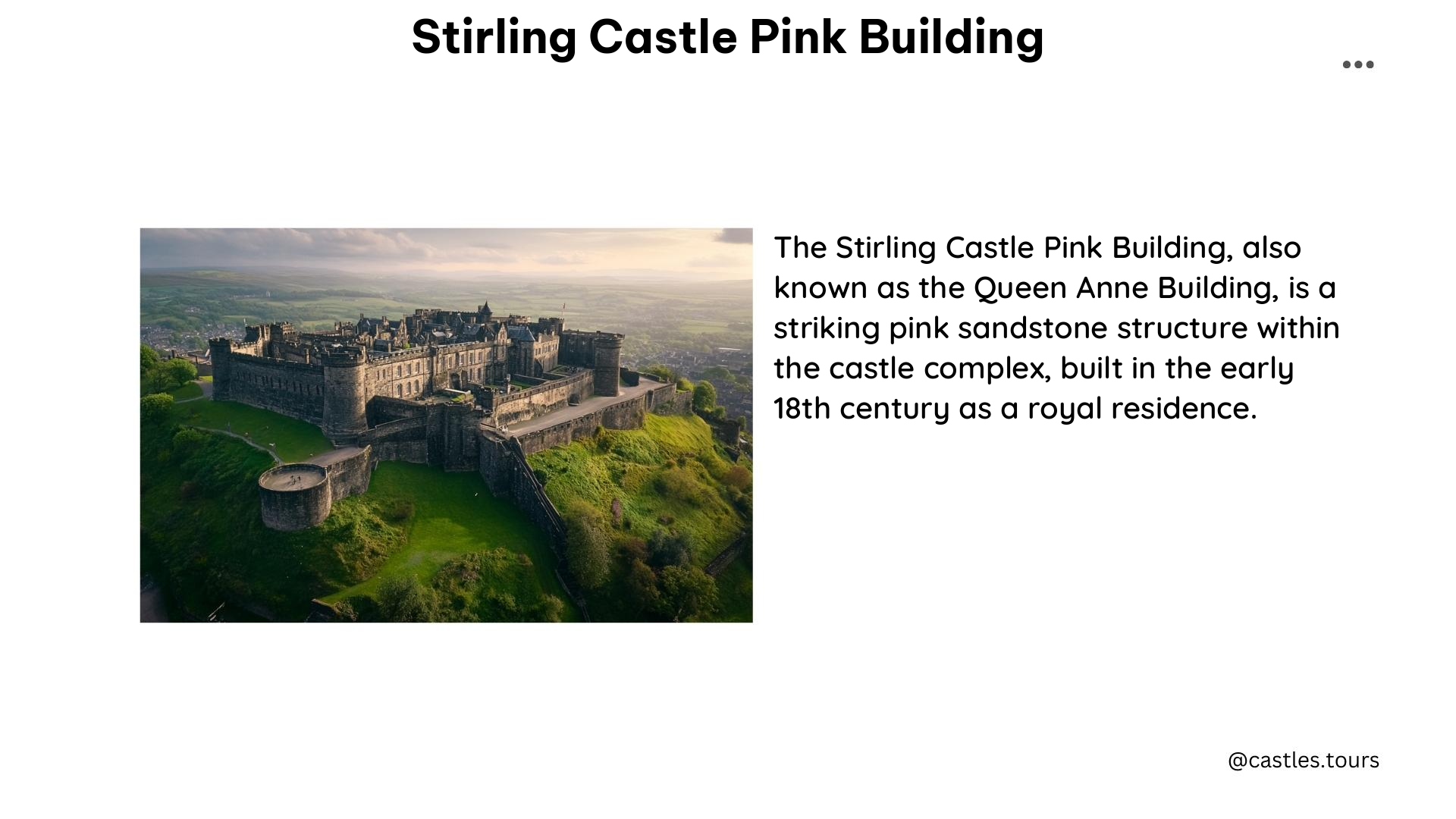The pink building at Stirling Castle is a stunning architectural marvel that has captured the imagination of visitors for centuries. As part of the Renaissance palace constructed during the reign of the Stewart kings, this vibrant structure stands as a testament to the grandeur and ambition of Scotland’s royal dynasty.
Historical Significance

Stirling Castle has a rich and storied past, having witnessed numerous sieges and battles throughout its history. The pink building, however, holds a special place within this legacy, as it was constructed between 1490 and 1600 during the height of the Stewart dynasty’s power and influence.
During this period, the Stewart kings sought to project an image of international prestige and royal authority. The construction of the Renaissance palace, with the pink building as a central feature, was a deliberate attempt to showcase the wealth, sophistication, and ambition of the Scottish monarchy.
Architectural Style

The pink building’s architectural style is a captivating blend of influences, reflecting the cosmopolitan nature of the Stewart court. The structure’s design incorporates elements of English, French, and German Renaissance styles, creating a unique and visually striking appearance.
The building’s ornate details and grand proportions are hallmarks of the Renaissance period, while its medieval-inspired features, such as the pointed arches and intricate stonework, add a sense of timelessness to the structure.
The vibrant pink hue of the building is the result of a meticulous restoration effort undertaken in the late 1990s. By recreating the original color scheme, the restoration team aimed to transport visitors back to the building’s heyday, when it would have stood out as a bold and commanding presence within the castle complex.
Purpose and Use
The pink building served a variety of functions during its history, reflecting the multifaceted nature of the Stewart court. It was primarily used as part of the royal residence, providing a space for the monarch and their entourage to gather, entertain, and conduct affairs of state.
The building’s grand halls and ornate interiors were the setting for lavish banquets, parliamentary meetings, and other important events. As a symbol of royal power and prestige, the pink building played a crucial role in shaping the public perception of the Stewart dynasty and their ambitions.
Haunting Legends
Stirling Castle is renowned for its haunted history, and the pink building is no exception. One of the most famous ghosts associated with the castle is the “Pink Lady,” believed to be the spirit of Mary, Queen of Scots, who is said to haunt the rooms where she spent her childhood and later years as a widow.
The legend of the Pink Lady has captured the imagination of visitors for centuries, adding an air of mystery and intrigue to the already captivating pink building.
Practical Information
Stirling Castle is open to the public throughout the year, with visitors able to explore the pink building and the rest of the castle’s impressive grounds and structures.
Tickets start at £15 for adults and £9 for children, with concessions available at £12. The castle is easily accessible by public transport or car, with a paid car park on-site.
Whether you’re a history buff, an architecture enthusiast, or simply someone who appreciates the beauty of Scotland’s historic landmarks, the pink building at Stirling Castle is a must-see destination.
References
- https://thelittlehouseofhorrors.com/stirling-castle/
- https://en.wikipedia.org/wiki/Stirling_Castle
- https://www.highlandtitles.com/blog/stirling-castle/
- https://www.ancient-origins.net/unexplained-phenomena/female-phantoms-stirling-castle-021519
- https://99percentinvisible.org/episode/the-great-restoration/
